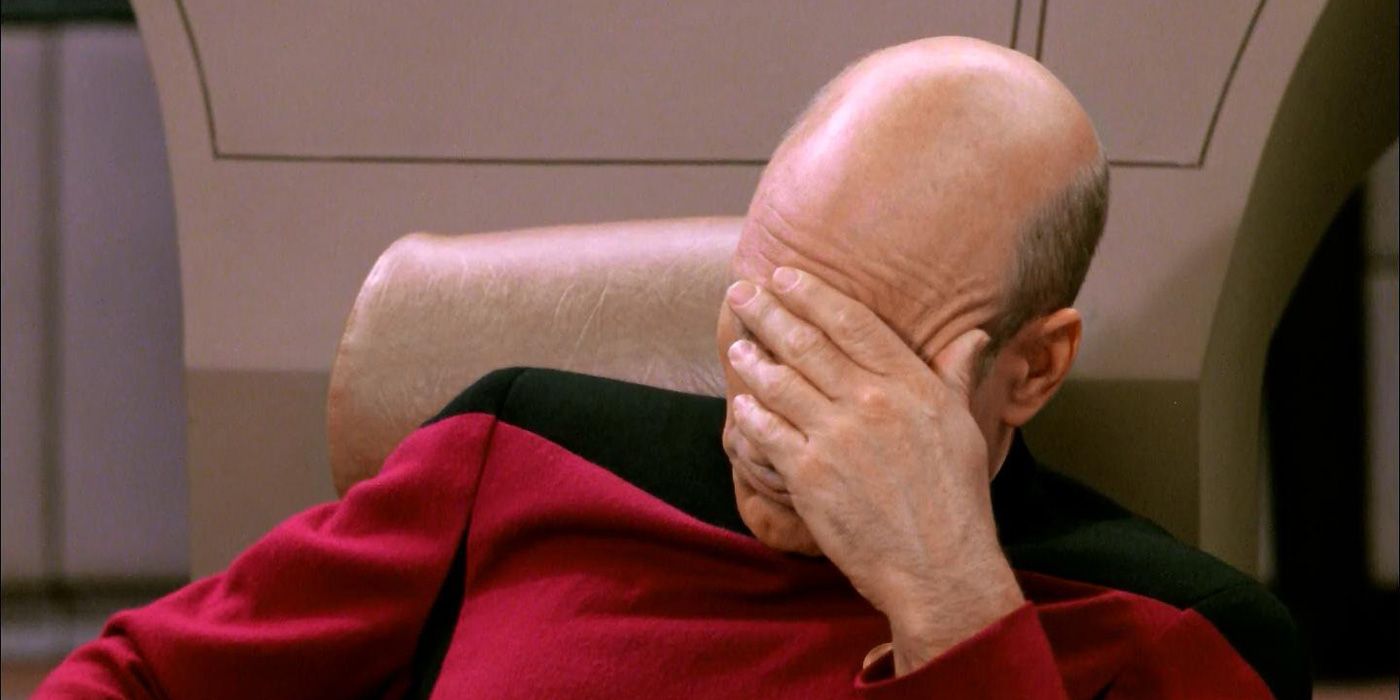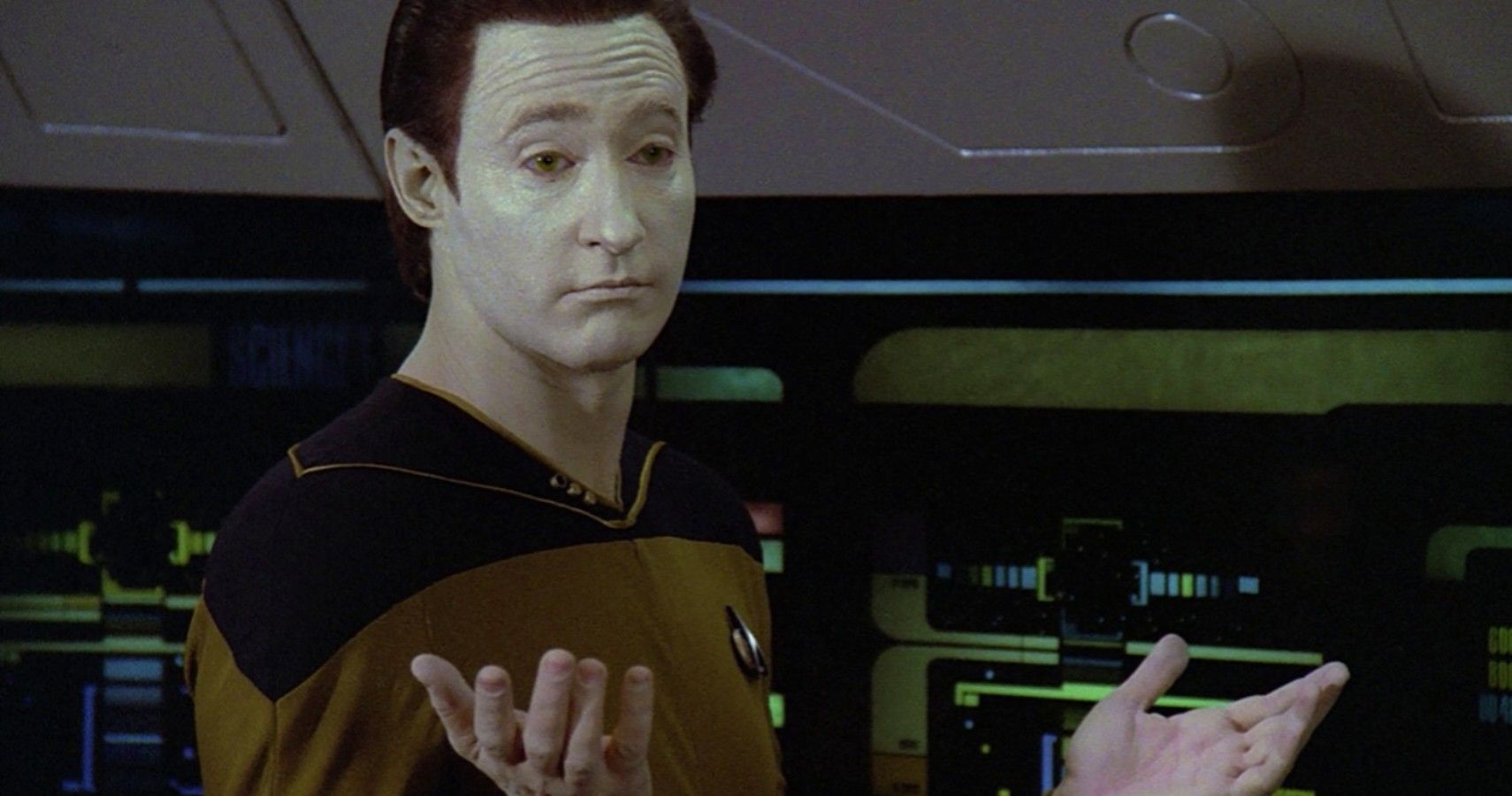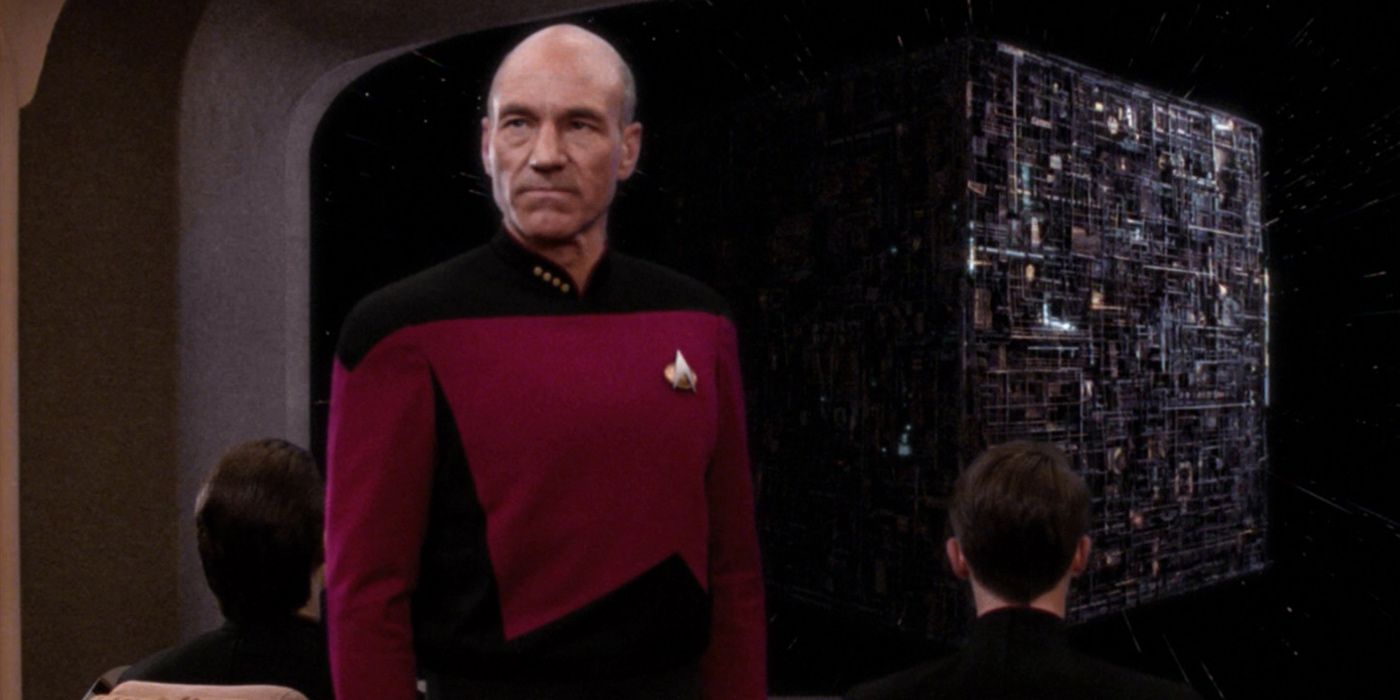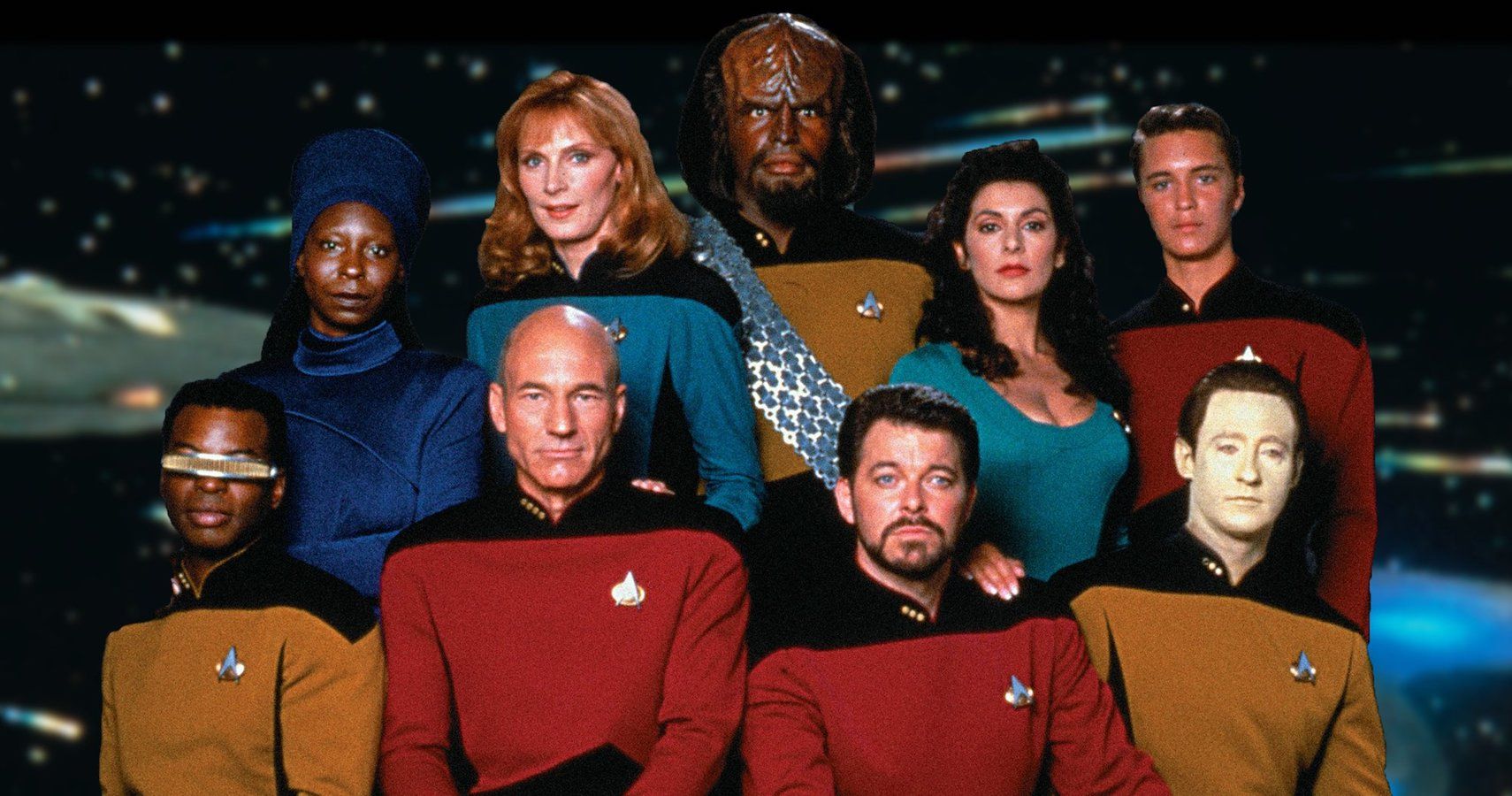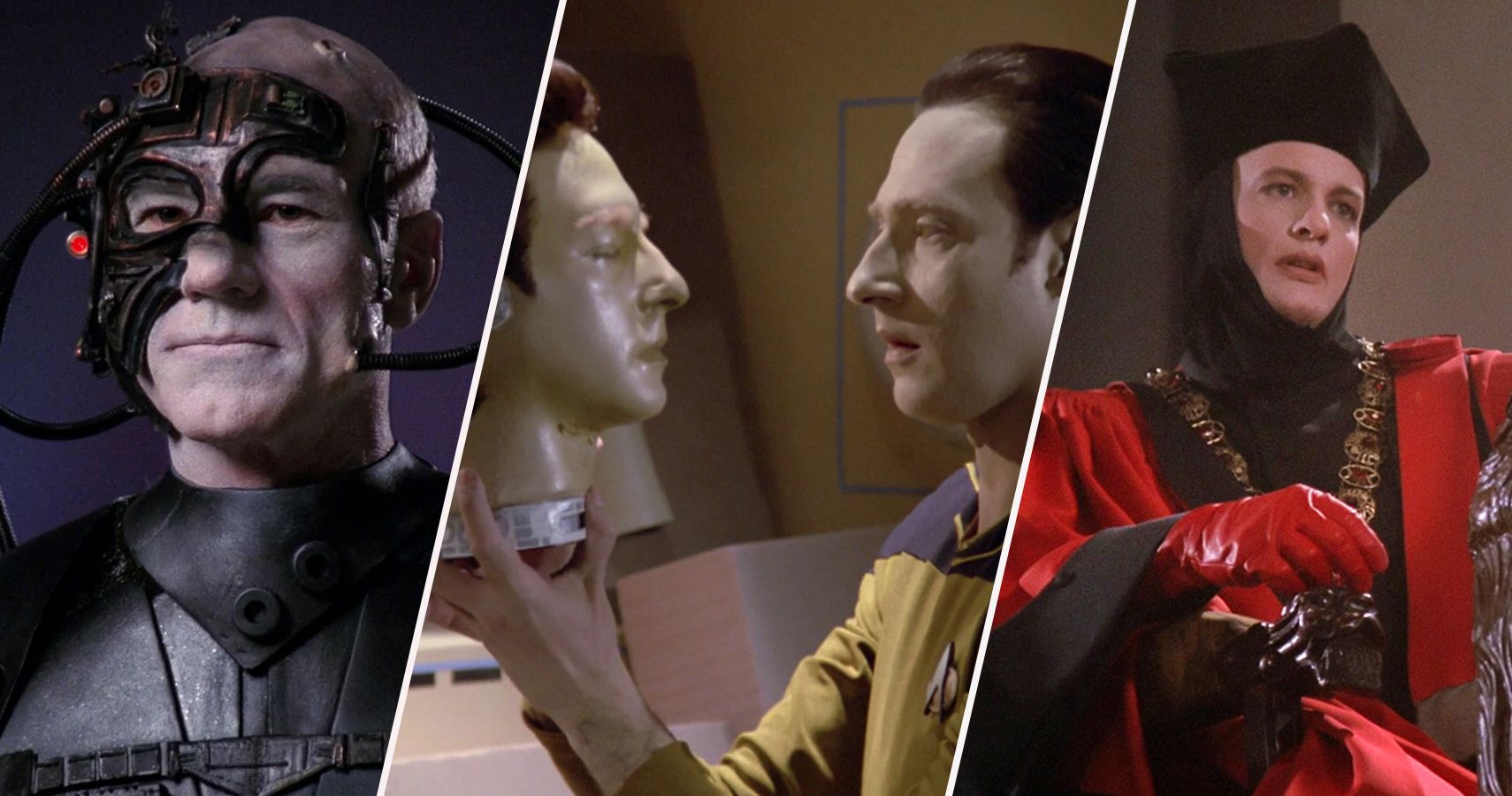As Star Trek: Picard approaches, many fans are likely prepping for a rewatch of Jean-Luc Picard's previous series, Star Trek: The Next Generation - but where to begin with that classic series is trickier than it might seem. Patrick Stewart shocked fans in 2018 when he announced he'd be returning to the role that made him a household name for a new show on CBS All Access. Star Trek: Picard takes place two decades after we last saw the good captain in the final Star Trek TNG film, Nemesis. Plot details for Picard have been highly guarded, but we know the Borg and the destruction of Romulus will play major roles in the series.
Fans might assume a rewatch of The Next Generation is a straightforward endeavor: starting from the beginning seems fairly obvious. But TNG had a notoriously difficult beginning, and it took the show literal years to find its own identity and voice. Pinpointing the exact moment when the show evolved from a wreck to a sci-fi institution is almost impossible, but there are signposts along the way, important building blocks that led the show forward.
Star Trek: The Next Generation started off poorly due to a number of factors, but it did eventually develop into a series that is retrospectively viewed as the hallmark of the genre. When TNG gets good, it gets really good. And in preparation for the new Picard series, viewers should maybe re-watch the whole thing anyway.
Why Star Trek: The Next Generation Starts Slow
After the runaway success of 1986's Star Trek IV: The Voyage Home, Paramount decided it was time to revive the franchise for the small screen. While Gene Roddenberry was not intended to be directly involved - he had already been pushed out of creative control of the films - when the Star Trek mastermind realized what Paramount had planned, he demanded to be the show's executive producer and creator. At this point in his life, Roddenberry's mental and physical health were in serious decline; he really had no business taking on a job as sprawling and intensive as developing a TV series, and it showed.
Star Trek: The Next Generation season 1 is essentially a shambles. Legendary Star Trek writer Ronald D. Moore has described the debut season as "unwatchable." The characters hadn't quite gelled into the family that fans would grow to love just as much as Kirk and Spock, despite strong performances from Stewart and the rest of the impressive cast. The visual style occasionally leaned too much toward the cheesiness of The Original Series, and the writing was, to put it charitably, not quite up to snuff. Longtime fans hated the show, viewing it as a soulless cash grab that wasn't "real" Star Trek.
Despite its glaring shortcomings, the show was a ratings success and was never in any real danger of cancellation during its run. Roddenberry would take a step back for the show's second season, which was a mild improvement. Episodes like "The Measure Of A Man" and "Q Who?" suggested the show was capable of greatness, even if it was unsure of how to deliver it consistently. After yet another behind the scenes shakeup before its third season, TNG began to figure out what kind of show it was.
Star Trek: The Next Generation Gets GREAT In Season 4
The Next Generation season 3 saw producer Rick Berman taking firmer control of the show as Roddenberry's health problems mounted. Berman hired Micheal Piller as the new head writer, who radically changed the way the show told stories, focusing much more on character pieces than overly convoluted sci-fi shenanigans. Season 3 is a little uneven, but it contains unquestionable gems like "The Defector," "Yesterday's Enterprise," and "The Offspring." Things were starting to look up, and fans took notice.
The true turning point for TNG came in the season 3 finale, "The Best Of Both Worlds, Part 1." That episode saw the return of the dreaded Borg, who had debuted the previous year in "Q Who?" This time the Borg were determined to assimilate Earth, and captured Picard to serve as their spokesman, transforming him into the Borg "Locutus." The episode ends on a legendary cliffhanger, as Commander William Riker - Picard's trusted first officer played with rakish charm by Jonathan Frakes - gives the order to open fire on the Borg ship housing Locutus/Picard. Picard, of course, would be rescued in the season 4 premiere"The Best Of Both Worlds, Part 2."
But unlike most shows at the time, TNG chose not to hit the reset button on Picard's Borg experience, framing his assimilation as extremely violating violence, from which he suffered deep, enduring trauma. Episodes like "Family," where Picard returns to his home town in France, and "Brothers," where Data has to grapple with the complicated legacies of his father and brother, were more nuanced and engaging than anything TNG had ever previously attempted. The show never looked back, and enjoyed critical acclaim along with massive popularity for the remainder of its run.
Sci-fi Fans Should Watch All Of Star Trek: The Next Generation
Star Trek: The Next Generation's first two seasons are unquestionably some patchy viewing, and while it's tempting to just skip those episodes, it's better not to. At the very least, the pilot episode, "Encounter At Farpoint," is a must watch. Not only did it introduce the crew and the basic premise of the show, it also introduced Q and his trial of humanity, which a recurring theme right up to the very last episode. There are plenty of important similar plot points woven throughout the first two seasons; Data's journey toward humanity, the mysterious alien the Traveler, Riker and Troi's relationship, and the unusual life and death of Tasha Yar, all have their origins in the first season. Season 2 introduced important elements like the Borg, the holodeck version of James Moriarty, Worf's relationship with the future mother of his child, and perhaps most importantly, Will Riker's beard.
Related: All The Star Trek Tie-In Books That Are Actually Canon
The Next Generation, by design, was almost never serialized, but it does begin to reference earlier episodes as it goes along; it's impossible to fully appreciate classics like "Yesterday's Enterprise" or "I, Borg" if you don't understand the initial concepts that drive those episodes. Those first 48 episodes may seem daunting, but if fans can stomach the show's considerable growing pains, the experience of watching the entire show will actually be more fulfilling.
Star Trek: The Next Generation is a product of a much different era of television. As a syndicated series, it wasn't vulnerable to network notes or traditional overnight viewership figures, which is likely how it survived for so long with such initially low quality. But even in the truly wretched moments of the series, the cast is still unbelievably great. The special effects were, at the time, unlike anything else on television, with the model work in particular on par with much more expensive sci-fi films like Star Wars; the Enterprise hero shots are never anything less than breathtakingly beautiful.
The aesthetic pleasures are nice, because the storytelling simply wasn't there until season 3, and greatness wouldn't arrive until season four. But as many fans will attest, a large part of being a Star Trek fan is swallowing hard and often enduring an iteration of the franchise that doesn't feel quite right, with the hope that it will eventually find its footing. That optimism - that sense of faith - was born with Star Trek: The Next Generation, the show that proved it could actually be the best of both worlds - it just needed a little time to figure out how.

